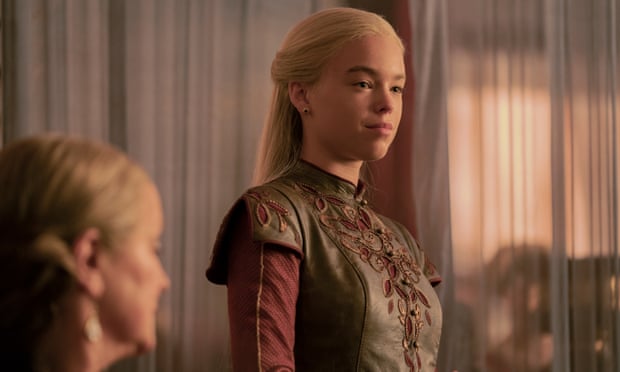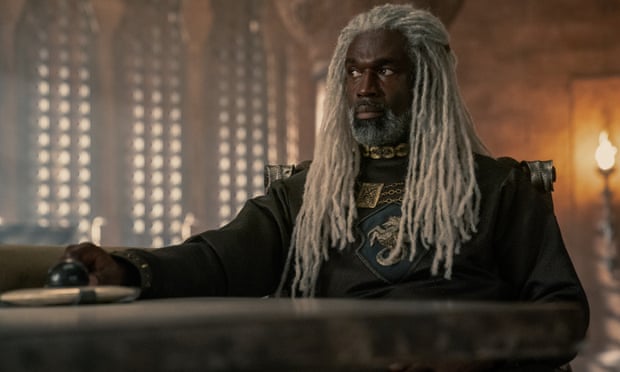Can we talk about something other than the throne?
For all its gratuitous nudity, dragons and surprise beheadings, the real X factor for Game of Thrones was the dialogue. Conversations had a way of humanizing characters while dispensing necessary world-building details; they told each other stories that expressed their flaws and virtues, while providing the audience reasons to care if they live or die. Take episode four, season one, when a trembling Samwell Tarly meets Jon Snow at Castle Black. Naturally, they talk about girls. Jon tells Sam that he’s still a virgin because he fears fathering a child out of wedlock, simultaneously unpacking the baggage of being a b*stard and explaining the meaning of Snow. “So you didn’t know where to put it?” Sam says. They laugh, and you believe these people care for each other. You want their friendship to succeed.
Four episodes into House of the Dragon, we’ve sped through nearly as many years, one war, and two Alicent Hightower pregnancies – yet we’ve just started to scratch the surface of our protagonists. Here, laughter is exceedingly rare, and everyone in the realm seems to be of a singular mind. All the highborn talk about is the throne, succession and threats to succession. This makes for extremely dry parties (Would it have killed any of the noblewomen in the hunting tent to crack a joke?) and even drier onscreen chemistry. From Ser Criston’s debut in episode one to his coupling in episode four, he and Rhaenyra have a total of one and half conversations, counting the one cut short by the boar. We learn a bit about his lineage, but does he have a personality? We may never find out.
Lord Corlys, we hardly know thee
HOTD zips through the plot with lightning speed, with little variation in terms of mood or scenery. Imagine the many colorful landscapes, personalities and clever punchlines of Game of Thrones, then compress that into a uniform shade of gray. The efficient storytelling is a feature of the source material, George RR Martin’s Fire & Blood. Written through the eyes of an archmaester at the Citadel, it offers an account of the Targaryen dynasty 300 years after the fact. Consequently, our characters tend to feel like distant historical figures. “The Sea Snake is an over-proud man,” according to the grand maester, but surely there’s more to him, right? Does he have any vices? And who wears the pants in his marriage to Princess Rhaenys?
As in the book, the show’s dialogue serves a perfunctory role, guiding the conflict to swift resolution with the cadence of a conveyor belt. Years-long estrangements are quickly repaired – “I’ve missed you,” Rhaenyra tells Alicent – and offscreen developments are succinctly accounted for. We may not have seen Lord Corlys in a while, but we’re told that he’s marrying his daughter to the Sealord of Braavos. This is a show built around absence – not only of Lord Corlys, but of laughter, texture or depth.

 "
" i'll hold that"
i'll hold that"




 making Joffrey the gawd baratheon story of a tragic Hero who tried to assassinate the great other with the same dagger.
making Joffrey the gawd baratheon story of a tragic Hero who tried to assassinate the great other with the same dagger.  *puts joint down.
*puts joint down.
